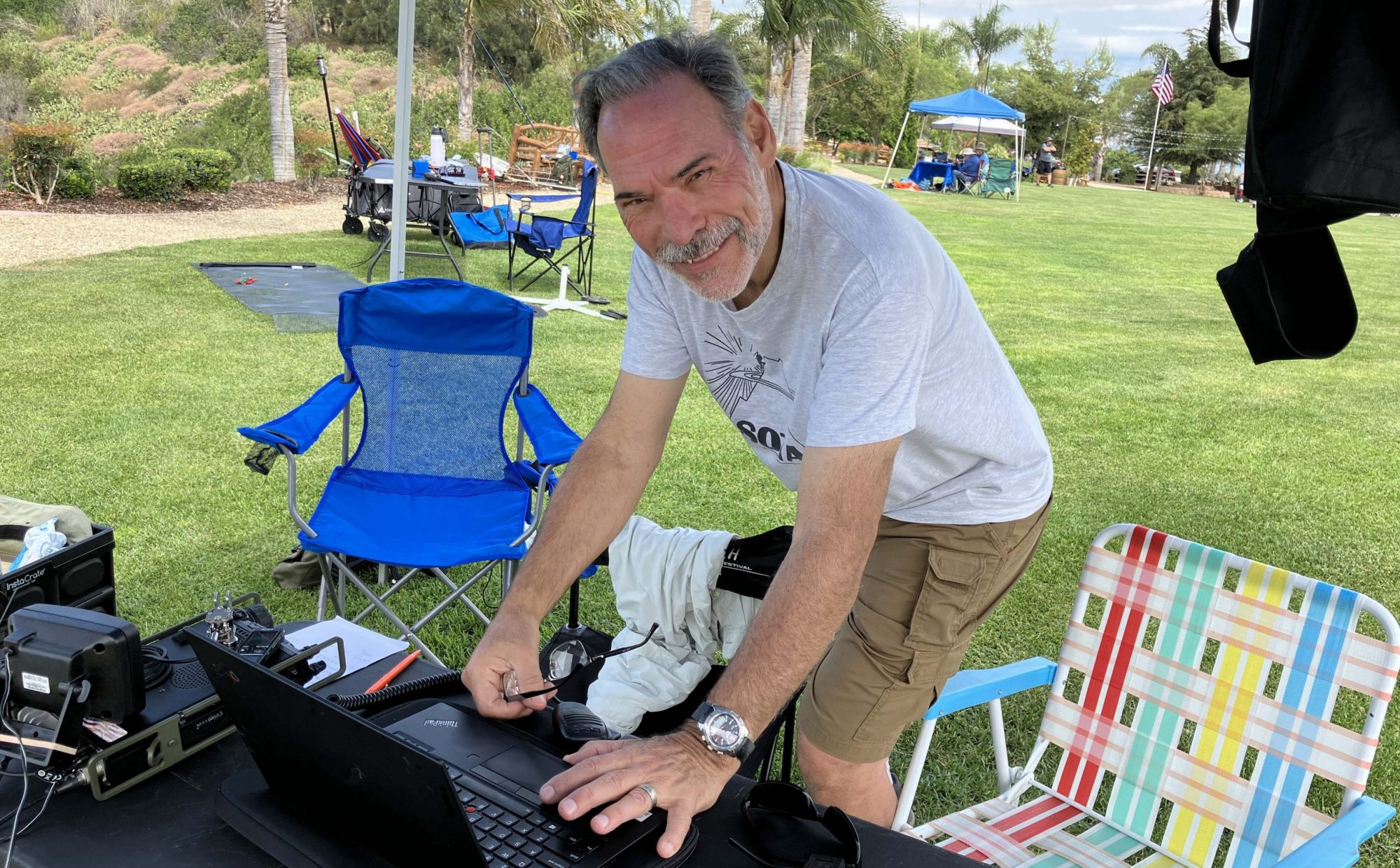CVARC Discussion Group

You’re encouraged to join CVARC’s Groups.io Discussion Group. It’s a great way to get and share information with other CVARC members.
Last Month’s President Message, Revisited
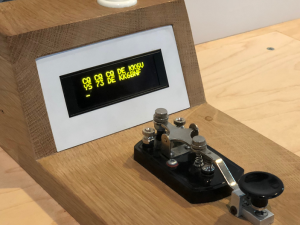 Last month, as part of my President’s Message, I included a story about calling CQ on a Morse code demo exhibit inside a Children’s Museum in San Francisco called Exploratorium. Paul-K6PVZ has since sent me the other ham’s version of the encounter, which was posted to the Exploratorium’s Listserv:
Last month, as part of my President’s Message, I included a story about calling CQ on a Morse code demo exhibit inside a Children’s Museum in San Francisco called Exploratorium. Paul-K6PVZ has since sent me the other ham’s version of the encounter, which was posted to the Exploratorium’s Listserv:Continue reading “Last Month’s President Message, Revisited”
Morse Group
If you’re a Morse code enthusiast, or interested in learning Morse code or improving your skills, check out CVARC’s Morse Group.
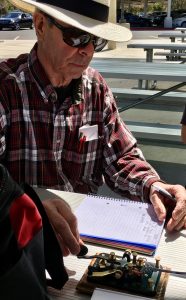 You’ll receive regular emails with attached audio files to practice copying, as well as other helpful information and ideas. There are also regular workshops and practice session.
You’ll receive regular emails with attached audio files to practice copying, as well as other helpful information and ideas. There are also regular workshops and practice session.
If you’re interested in becoming part of this “club within the club,” contact Steven-KZ6H at sggillis@gmail.com.
The Morse Group meets Mondays at 7:00 pm on 28.053 MHz, but call CQ any time. All are welcome.
Newbie Net
 Sunday nights, 7 pm, Bozo Repeater 147.885 ( – 127.3). The Newbie Net is an opportunity for newer hams to get on the air and gain experience and confidence. More experienced hams or “Elmers” regularly check in and are available to answer questions and offer advice. All are welcome.
Sunday nights, 7 pm, Bozo Repeater 147.885 ( – 127.3). The Newbie Net is an opportunity for newer hams to get on the air and gain experience and confidence. More experienced hams or “Elmers” regularly check in and are available to answer questions and offer advice. All are welcome.
Want to be net control? Contact Todd -KD6RCM at kd6rcm@arrl.net. The procedure will be provided.
Net Control Operators, please send me your logs of check-ins after the net.
Todd-KD6RCM
Getting Started in Ham Radio
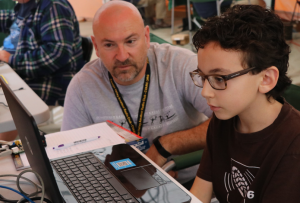
There are many reasons why people take up the hobby of amateur radio, aka ham radio. For some, it’s about preparedness and being able to use amateur radio for emergency communications when other modes of communication are unavailable. It is not uncommon for internet and cell phone service to be interrupted for extended periods of time, following natural disasters or other events, when infrastructure becomes compromised or overwhelmed. Amateur radio does not rely on phone lines or other infrastructure, so it’s a perfect choice for such situations. Others come to the hobby because of an interest in electronics or science, and a desire to experiment with radio-based modes of communication.
Whatever your reasons, whether you want to be able to talk across town or around the world, it’s important that you learn a little about electrical principles, radio waves, station set-up, operating practices and radio safety. In short, you’ll first need to do a little studying and obtain your amateur radio license.
In the U.S., Amateur Radio is regulated by the Federal Communications Commission (FCC) under the Communications Act of 1934. It is also subject to numerous international agreements. All Amateur Radio operators must be licensed. In the U.S. there are three license classes—Technician, General and Extra. Most countries have similar licensing structures with increasing privileges as your skill increases. Each successive level of license comes with an expansion of privileges. With only 3 License Classes, getting started in Amateur radio has never been easier! Morse code is no longer required for any U.S. Amateur Radio license, but it is still a very popular operating mode and is still in widespread use.
The FCC has authorized Volunteer Examiners (VE) to administer the tests. These are Amateur Radio operators who have taken additional training and testing to be certified to perform this function. There is always a minimum of 3 VEs required to administer any test. Each test is graded by each of the VEs to ensure accuracy in scoring.
For more information, contact someone from our club (see our Contact page) or Call the ARRL’s toll-free number at 1-888-277-5289 and request an informational Amateur Radio prospect package and/or visit the ARRL getting started page at ARRL Hello Radio.
LEVEL 1: Technician Class License
Your introduction to Amateur Radio.
Exam Requirement: 35-question Technician Written Exam (Element 2). This is derived from a pool of 450 questions.
- Privileges: All VHF/UHF Amateur bands (frequencies above 30 MHz).
- Limited operations in certain HF bands.
The FCC Technician License exam covers basic regulations, operating practices and electronics theory, with a focus on VHF and UHF applications. With a Technician Class license, you will have all ham radio privileges above 30 MHz. These privileges include the very popular 2-meter band. Many Technician licensees enjoy using small (2 meter) handheld radios to stay in touch with other hams in their area. Technicians may operate FM voice, digital packet (computers), television, single-sideband voice and several other interesting modes. You can even make international radio contacts via satellites, using relatively simple station equipment. Technician licensees now also have additional privileges on certain HF frequencies. Technicians may also operate on the 80, 40 and 15 meter bands using CW (Morse Code), and on the 10 meter band using CW, voice and digital modes.
LEVEL 2: General Class License
Moving onto the HF (High Frequency) bands for world wide contacts.
- Exam Requirement: 35-question General Written Exam (Element 3). This is derived from a pool of 450 questions.
- Privileges: All Technician Class privileges plus privileges on parts of all the HF Amateur bands (frequencies from 1.8 MHz to 30 MHz).
The FCC General License exam covers more regulations, operating practices and electronics theory, with a focus on the HF bands and working longer distances and other countries. There is a fair amount of electronics theory needed to pass this test, but the study materials cover it very well. With a General Class license, you will have access to all the ham radio bands, although there are certain portions of the HF bands that are restricted to Extra Class licenses (usually at the lower end of each band). General Class privileges include the ability to work contacts all over the world, even with modest indoor antennas (such as in the attic or on a balcony). Generally you would use a desktop radio which is a little larger and may require additional accessories. The most popular modes on the HF bands are SSB Voice (Single Sideband), CW, and Digital Modes like FT8. But many hams operate AM voice (Amplitude Modulated) like AM radio stations use, ATV (Amateur Television), and many more.
LEVEL 3: Extra Class License
Access to all the the HF (High Frequency) bands for world wide contacts.
- Exam Requirement: 50-question General Written Exam (Element 4). This is derived from a pool of 900 questions.
- Privileges: All Technician Class privileges plus all General Class privileges plus privileges on the parts of all the HF Amateur bands (frequencies from 1.8 MHz to 30 MHz) that are restricted to Extra Class Licensees.
The FCC Extra License exam covers more regulations, operating practices and a lot of electronics theory, with a focus on the HF bands and working longer distances and other countries. There is a large amount of electronics theory (including antenna design and some math) needed to pass this test, but the study materials cover it very well. With an Extra Class license, you have access to all parts of the ham radio bands. There are certain portions of the HF bands that are restricted to Extra Class licenses (usually at the lower end of each band) and these are popular with some DX (long distance) stations, especially from countries that are difficult to work. They know the number of hams in those portions will be smaller and that makes it easier to work them. You can still use modest indoor antennas (such as in the attic or on a balcony) but you are more likely to want outdoor antennas, a tower and beam, an amplifier (for more power), etc. Generally you would use a desktop radio which is a little larger and may require additional accessories. The most popular modes on the HF bands are SSB Voice (Single Side Band), CW, and Digital Modes like FT8. But many hams operate AM voice (Amplitude Modulated) like AM radio stations use, ATV (Amateur Television), and many more.
Study Materials
How to learn what you need to pass the license tests.
- Take a Class –CVARC also offers free classes for all levels of amateur radio licenses. See the Licensing Classes category for more information. For more information, please contact CVARC Education Coordinator Keith Elliott-W6KME at w6kme@cvarc.org.
- Get a License Manual – There are manuals for each class of license. Each manual covers the information on the exam and includes the complete question pool with the answers. The ARRL License Manuals tend to be a little more formally written, compared to the Gordon West License Manuals. Also popular are the No-Nonsense Guides.
- Study Online – There are several websites that offer online education and practice tests. But be careful that the site, or app, you’ve chosen is using the current question pool. The question pools are revised every 2 years or so. Popular options include:
- Join CVARC – Find an “Elmer” who can assist you with study materials and preparing for your exam.
Exams
Exams are conducted by accredited Volunteer Examiners and sessions are sponsored by CVARC. Exams are conducted for all FCC Amateur Radio license classes under the supervision of the ARRL VEC. No pre-registration is necessary, walk-ins are welcome. The Exams start at 8:30 AM at:
East County Sheriff’s Station (ECSS)
2101 East Olsen Road
Thousand Oaks, CA 91360
(Located between Highway 23 and the Ronald Reagan Presidential Library)
Click for dates of upcoming exam sessions (all sessions are conducted on Sunday mornings.)
ON EXAM DAY BRING THE FOLLOWING ITEMS:
- A legal photo ID (e.g.: driver’s license, passport).
- When no photo ID is available, two forms of identification must be presented:
- Non-photo ID/driver’s license (some states still have them)
- Birth certificate (must have the appropriate seal)
- Social Security card
- Library card
- Utility bill, bank statement or other business correspondence that specifically names the person; or a postmarked envelope addressed to the person at his or her current mailing address as it appears on the Form 605.
- Students may bring any of the above items and/or a school ID, minor’s work permit, report card, or a legal guardian may present a photo ID.
- Bring your Social Security Number (SSN) or your FCC issued Federal Registration Number (FRN). VEC’s are required by the FCC to submit either your SSN or your FRN number with your license application form. If you prefer not to give your SSN at the exam session, then you may register your SSN with the FCC before exam day. Once you have a FCC issued FRN, you may no longer use your SSN on the application. For instructions on how to register your SSN with the FCC and receive a FRN, visit the FCC’s registration instructions page.
- If applicable, bring either a photocopy of your current Amateur Radio license or a reference copy printed out from the FCC website, the license information printed from ARRL website or QRZ website, or the original(s) and photocopy(s) of any Certificates of Successful Completion of Examination (CSCE) you may hold from previous exam sessions. If your license has already been issued by FCC, the CSCE showing license credit is not needed. The photocopy(s) will not be returned. Instructions on how to obtain an official FCC license copy are found at http://www.arrl.org/obtain-license-copy.
- At least two number two pencils with erasers and a pen.
- A calculator with the memory erased and formulas cleared is allowed. You may not bring any written notes or calculations into the exam session. Slide rules and logarithmic tables are acceptable, as long as they’re free of notes and formulas. Cell phones must be silenced or turned off during the exam session and the phones’ calculator function may not be used. In addition, iPhones, iPads, Androids, smartphones, Blackberry devices and all similar electronic devices with a calculator capability, may NOT be used.
- Bring a check, a money order or cash to cover the $15 exam session fee.
The FCC now offers partial credit for expired General, Advanced or Extra Amateur Radio licenses. Please refer to the exam element credit rules and instructions. The normal test fee applies for processing these applications.
CVARC administers license examinations (VE Sessions) six times a year. For more information on VE Sessions please contact Andy Ludlum-K6AGL at k6agl@cvarc.org or by phone at 818-370-3402.
Welcome to the Conejo Valley Amateur Radio Club
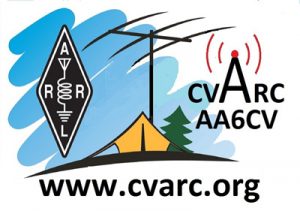
The Conejo Valley Amateur Radio Club (CVARC) is made up of people who enjoy the hobby of amateur or “ham” radio. The club’s primary purpose is to exchange information to build knowledge of amateur radio. We conduct regular events for fun and to build our skills in the best operating practices. Continue reading “Welcome to the Conejo Valley Amateur Radio Club”
Basic Radio Tech Talk
Mark your calendar for July 18 for the first CVARC Basic Radio Tech Talk which will be on antennas. Everyone is invited.
Location: Thousand Oaks City Hall Oak Room.
Time 7:00 – 9:00 PM
Presenters: Bill Willcox, Education Coordinator, Adrian Jarett, Technical Guru, Zac Cohen, CVARC Member at Large. All types and sizes of practical amateur radio antennas will be discussed. Some you buy and install, others you can build yourself. We will attempt to answer specific questions for your situation, so bring your questions.
For more information contact William_willcox@pacbell.net
Free Amateur Radio Licensing Classes
CVARC is offering free classes leading to an Amateur Radio License. We offer  classes for the TECHNICIAN (Entry Level) and GENERAL (Intermediate Level) Licenses.
classes for the TECHNICIAN (Entry Level) and GENERAL (Intermediate Level) Licenses.
All classes will be at the East County Sheriff’s Station Community Room, 2101 E. Olsen Road, Thousand Oaks, California.
TECHNICIAN LICENSE CLASSES
1:00 – 5:00 PM, Saturday July 21, 28, August 4, and August 11.
GENERAL LICENSE CLASSES
8:00 AM -12:00 PM, Saturday July 14, 21, 28, August 4 and August 11. Continue reading “Free Amateur Radio Licensing Classes”
Summer Sporadic E Season
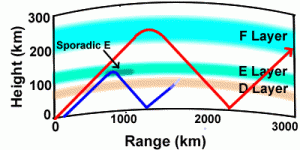
about 300 miles to a maximum of about 1200 miles. Multi-hop Es also occurs with DX as far as the East Coast, Hawaii, and even Japan on a very SPORADIC basis! Continue reading “Summer Sporadic E Season”
